Make Mac OS X Speak (or Sing) the Output of Any Command Line Task
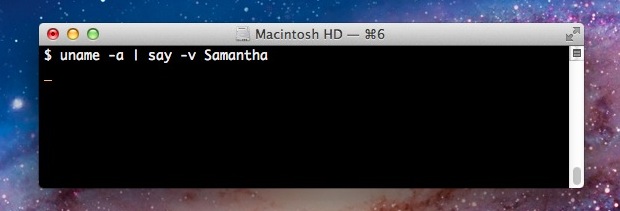
Along the lines of vocally announcing task completion within the command line, you can also have Mac OS X speak the output of any executed command.
Read more »

Along the lines of vocally announcing task completion within the command line, you can also have Mac OS X speak the output of any executed command.
Read more »
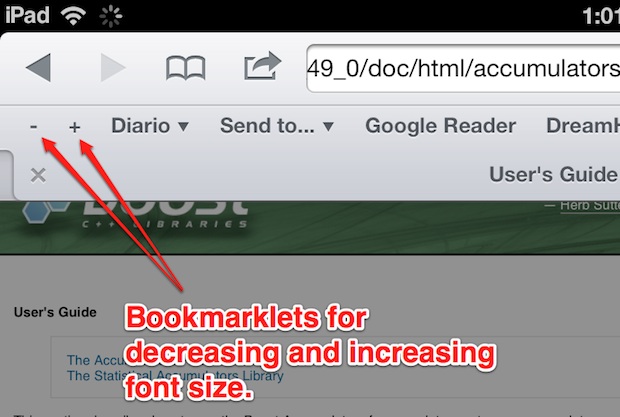
Everyone has run into a webpage where the font size is unbearably small on an iOS device, typically a reverse pinch gesture will make the text legible but on some pages that have a fixed width you then have to scroll sideways in addition to up and down. You can sort of get around that font size limitation by using the Reader feature on an iPhone or iPad, but that’s not ideal for every website either. This is precisely what two handy bookmarklets aim to resolve, by creating two fontsize increase and decrease buttons that can be accessed directly in Safari.
This addition is so useful that the concept should probably be included in future versions of Safari for iOS but only time will tell if that happens. In the meantime here’s what you need to do to get this working.
Repeat this process separately for both the increase and decrease functions:
Decrease Font Size (-)
1 | javascript:var p=document.getElementsByTagName('*');for(i=0;i<p.length;i++){if(p[i].style.fontSize){var s=parseInt(p[i].style.fontSize.replace("px",""));}else{var s=12;}s-=2;p[i].style.fontSize=s+"px"} |
Increase Font Size (+)
1 | javascript:var p=document.getElementsByTagName('*');for(i=0;i<p.length;i++){if(p[i].style.fontSize){var s=parseInt(p[i].style.fontSize.replace("px",""));}else{var s=12;}s+=2;p[i].style.fontSize=s+"px"} |
These bookmarklet tweaks work by editing a bookmark URL and replacing it with a javascript that changes on page behavior, similar custom bookmarklets have allowed us to View Page Source in iOS Safari and even use Firebug on iOS.
This very handy solution comes from Marcos.Kirsch.com.mx, who recommends placing them in the Safari bookmarks bar for easy access.
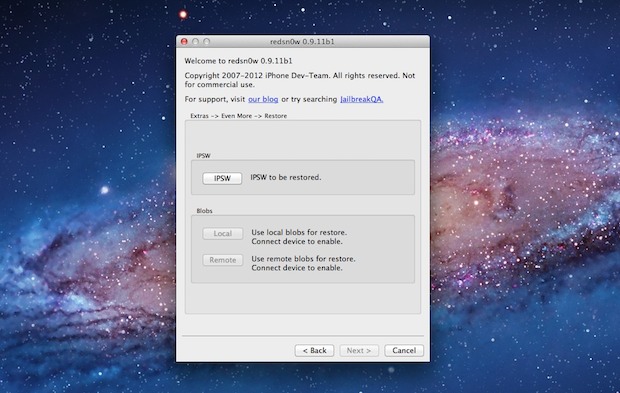
Unhappy with iOS 5.1 and tethered booting a jailbroken device? A new version of the redsn0w jailbreak utility allows users to downgrade their iOS hardware from iOS 5.1 to iOS 5.0.1, allowing for a return to an untethered jailbreak with the previous iOS version. Perhaps most significantly, the redsnow assisted downgrade works on all A5-equipped hardware, including the iPad 3, iPad 2, and iPhone 4S. There is a caveat though, downgrading is only possible for iOS devices which have SHSH blobs saved with Cydia or TinyUmbrella, an activity that must have been performed on a jailbroken device at the time it was running 5.0.1.
To use the new downgrade functionality in redsn0w, download the latest version, launch the app, and click on “Extras” followed by “Even More” and then “Restore”. You will need the iOS 5.0.1 IPSW file to complete the task.
For those without SHSH blobs saved, there remains a tethered jailbreak available for iOS 5.1.1 and an untethered variation for all devices is currently in the works with a release expected sometime over the next few weeks.
You can find more information about this specific release on the Dev Team blog.
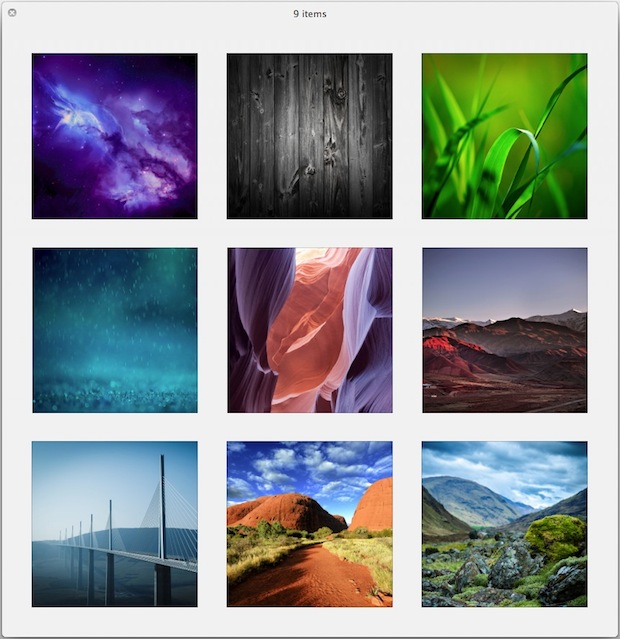
Everyone loves a good wallpaper to beautify their desktop or homescreen. We try to post some of the nicer ones we find and to continue that tradition we’re sharing 9 more absolutely gorgeous wallpapers that have been sized for the new iPads retina display. Even if you don’t have a new iPad, the resolution of each image is a whopping 2048 by 2048 pixels which should be high enough to function as desktop backgrounds for most Mac and PC displays too.
Click the images below to open them in a new window, note the pictures hosted on InterfaceLift require manually selecting the screen resolution which will make it easy to get the perfect resolution for your display.
![]()
If you’ve ever started to accidentally download an app of something on an iPhone, iPad, or iPod, or you just decide you want to stop an app download for some other reason, you can pause and stop downloads onto iOS devices that come from the App Store.
This tutorial will detail how to stop a download from the App Store in iOS. Additionally, we’ll show you how to pause a download from the App Store and how to resume that download to iOS again.
The stop trick works to cancel the download of any app in any version of iOS, it works the same on all iPhone, iPad, and iPod touch devices too.

Ever since Mac OS X 10.7, the Mac has included the same elastic over-scrolling that exists in the iOS world. Frequently called “rubberband scrolling”, it kicks in as an overscrolling effect that runs out of the scrollable region revealing the linen background before snapping back into the scrollable region. Scroll up quickly with or without inertia in virtually any window of OS X to see the effect in action. Rubberbanding makes for good eye candy and makes the Mac feel familiar to those coming from the iOS world, but some users are annoyed with it and will appreciate the ability to disable the scroll elasticity completely.
If you want to ditch the elastic rubber band stylized scrolling, you can do so through a defaults string. This works in OS X Mavericks, Mountain Lion, too, and can be quickly reversed if necessary.
Read more »
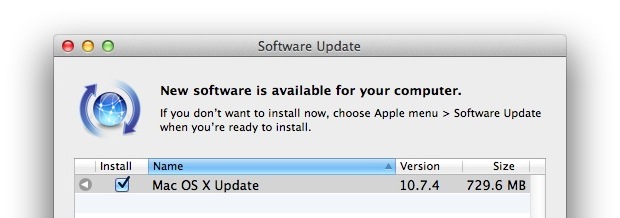
Mac OS X 10.7.4 Update has been released by Apple, the update includes bug fixes and security updates and is recommended for all OS X Lion users to install. Two of the most significant changes are a fix to a restoring windows bug and a patch for a potential security issue with FileVault passwords, though there are a handful of other changes and fixes that are listed below in the changelog. An update to Safari is also bundled within the software update.
OS X Lion users can download the OS X 10.7.4 update directly via Software Update from the Apple menu, the update weighs in around 730MB. Direct download links are below, though most users should upgrade through Software Update to keep things simple.
These are direct download links from Apple servers, each file is a DMG.
The complete change log for 10.7.4 client is as follows:
- Resolve an issue in which the “Reopen windows when logging back in” setting is always enabled.
- Improve compatibility with certain British third-party USB keyboards.
- Addresses permission issues that may be caused if you use the Get Info inspector function “Apply to enclosed items…” on your home directory.
- Improve Internet sharing of PPPoE connections.
- Improve using a proxy auto-configuration (PAC) file.
- Address an issue that may prevent files from being saved to an SMB server.
- Improve printing to an SMB print queue.
- Improve performance when connecting to a WebDAV server.
- Enable automatic login for NIS accounts.
- Include RAW image compatibility for additional digital cameras.
- Improve the reliability of binding and logging into Active Directory accounts.
- The OS X Lion v10.7.4 Update includes Safari 5.1.6, which contains stability improvements.
All Mac users should perform a backup before installing system software updates, initiating a manual backup with Time Machine is just a matter of right-clicking a drive.

If you have several iPhones, iPads, or iPods that need updating to the latest version of iOS, you can use a nice trick to save some bandwidth and download a single iOS update file to apply to multiple devices from either Mac OS X or Windows. This is a perfect solution for a family that has multiple iPhones or iPads that need updating, particularly when you don’t want to download the same firmware multiple times.
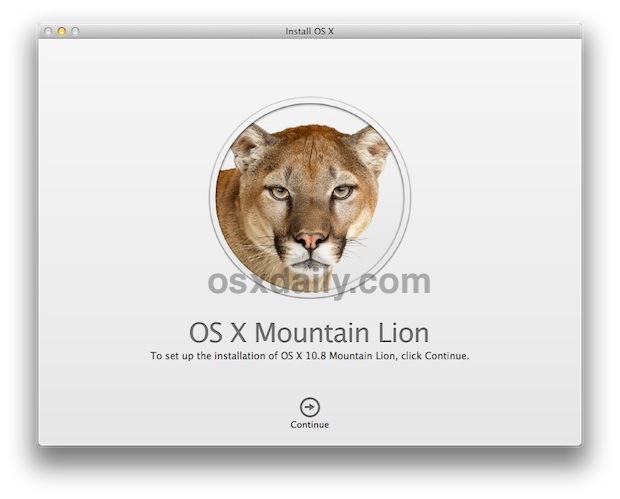
Mac OS X Snow Leopard can be upgraded directly to OS X Mountain Lion, assuming the final release maintains the same capacity as the currently available developer previews. To perform the direct upgrade as it stands today, users will need to have created an OS X Mountain Lion USB installer from which to boot off of and upgrade with, though there is a possibility that a Snow Leopard Mac will also have access to Mountain Lion directly from the Mac App Store.
We have received many questions about this in our inboxes and comments and figure with the OS X Mountain Lion release date set for summer it’s a good time to answer it based on currently available information. It’s important to note this upgrade path is based off of the current developer previews of Mountain Lion and upgrade eligibility could change before the public release, it’s also possible that Apple won’t officially support upgrading from Mac OS X 10.6 to 10.8 and this could remain an unofficial and unsupported feature.
A fair amount of OS X Snow Leopard users have held off on upgrading to OS X Lion, but with the release of Mountain Lion around the corner it’s quite likely a lot of OS X 10.6.8 holdouts will jump directly to OS X 10.8 if it is possible. Mountain Lion does have stricter system requirements than it’s predecessor, however, and some owners of older Mac hardware could wind up with Lion being the last supported version of OS X on their machines.
We will update with additional information on the various Mac upgrade paths to OS X Mountain Lion as further details become available.

By using Mac OS X Smart Folders, anyone can quickly access all files they were working on yesterday without caring about where they were stored or what folders they reside in. There are two ways to set this up, the first will utilize a quick modification to “All My Files” and the second will be more inclusive by creating a custom Smart Folder.
Read more »

By appending the say command to the end of another command, Mac OS X will vocally announce when the initial task has finished running successfully. For example, to have OS X announce that a particular script has finished running the command could be:
python backup.py && say "jobs done"
The important part is the “&& say” portion, which can also be customized with other voices from Mac OS X’s text to speech options by using the -v flag followed by a voice name, like so:
dscacheutil -flushcache && say -v Alex your cache has been cleared sir
This is perfect for running scripts, making svn/git commits, compiling code, and other tasks that can take an indeterminate amount of time to complete and where it’s easy to become distracted by facebook^H^H^H^H^H^H^H^H other work.
This great tip was posted by @niels on Twitter, follow @osxdaily there too to get our latest posts and updates.
For the power users out there who prefer to leave their hands on the keyboard as much as possible, you’ll be pleased to know that the Dock in Mac OS X can be used exclusively from the keyboard with full functionality.
With just the right keys pressed and keystroke combinations, you can navigate around Dock items and apps, access the right-click menu, launch apps, force quit apps, hide others, and more.
We’re going to highlight some of the most useful keyboard shortcuts for using the Mac Dock.
![]()
Rich text format doesn’t always translate well to the web and it often gets garbled through emails sent across platforms. The simplest solution is to convert the RTF to plain text and then either transfer the resulting txt file or paste the content it into an email or otherwise.
Here is how you can do that quickly and freely in Mac OS X using none other than the built-in TextEdit app:

Though almost everyone likes a nice photo screen saver and some of the funkier options out there, I’m also big fan of minimalist screensavers that do something simple like displaying just the time. That’s exactly what we have courtesy of Apple UI designer Robert Padbury, two beautifully simple clocks, either in 12 hour or 24 hour format, no other frills.
Read more »
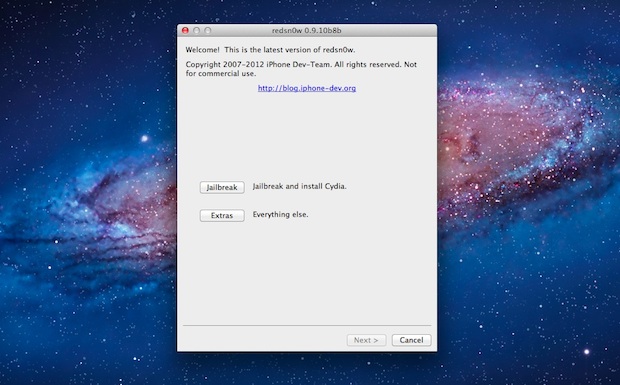
iOS 5.1.1 was just released by Apple and believe it or not has already been jailbroken for some A4 devices. The jailbreak remains tethered, for the uninitiated that means each time the iOS device is rebooted it will need to connect to a computer and boot with the assistance of redsn0w.
Compatibility for this jailbreak includes iOS 5.1.1 on iPhone 3GS, iPhone 4, iPad 1, and iPod touch 3rd and 4th gen. The iPad 2, iPhone 4S, or iPad 3 are not yet supported.
As with any jailbreak, be sure to backup before proceeding.
The need to select older IPSW will likely be eliminated in an upcoming release of redsn0w, but for the time being it remains necessary.
Remember to boot tethered every time you the device turns on and off, that is done by launching Redsn0w, selecting “Extras” and choosing “Just Boot” from the options.
Update: Redsn0w for 5.1.1 is now untethered, but you can also use Cydia to download “Rocky Raccoon” and untether this jailbreak after completion.
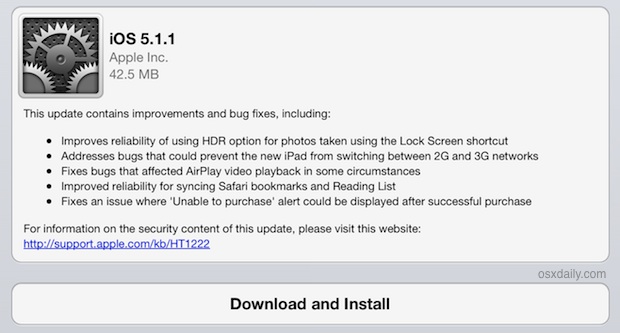
iOS 5.1.1 has been released for iPad, iPhone, and iPod touch, the software update comes as build 9B206 and includes a variety of bug fixes including an HDR photo issue, improved AirPlay, iPad network switching, an iTunes store fix, and improvements to Safari reading list syncing. The official changelog is listed below, and the software update is recommended to install for all iOS users.
The two simplest methods to update to iOS 5.1.1 are either through iTunes update or on the iOS device itself through OTA updates. Connect the iOS device to iTunes and install the update when prompted, or on the iOS device tap on “Settings” then “General” and then “Software Update”. For the bandwidth conscious, the OTA update on device is the leanest, with the update weighing in around 45MB.
These are direct download links to firmware files hosted by Apple, right-click and “Save As” for best results. The file extension should be .ipsw and nothing else, using IPSW files is easy but for most users it’s recommended to download through iTunes or the iOS device.
Separately, iOS 5.0.1 for Apple TV has been released:
Note the ISPW files are significantly larger than the delta updates available through OTA software update, and are generally best used by advanced users.
Courtesy of Apple:
- Improves reliability of using HDR option for photos taken using the Lock Screen shortcut
- Addresses bugs that could prevent the new iPad from switching between 2G and 3G networks
- Fixes bugs that affected AirPlay video playback in some circumstances
- Improved reliability for syncing Safari bookmarks and Reading List
- Fixes an issue where ‘Unable to purchase’ alert could be displayed after successful purchase
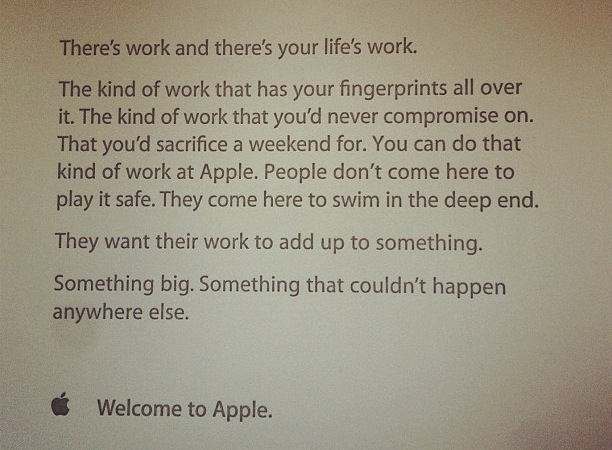
For those of us who will probably never work at Apple, this little inspirational new-hire note gives some insight into the company culture and philosophy. Apparently this greets all new employees upon their first day with the company, it reads:
There’s work and there’s your life’s work.
The kind of work that has your fingerprints all over it. The kind of work that you’d never compromise on. That you’d sacrifice a weekend for. You can do that kind of work at Apple. People don’t come here to play it safe. They come to swim in the deep end.
They want their work to add up to something.
Something big. Something that couldn’t happen anywhere else.
Welcome to Apple.
The message is clearly inspiring while also demonstrating the demanding nature of work at Apple, which helps to explain why their products are so refined and ultimately enjoyable for all of us to use.
This was found on HackerNews, which has a mostly negative response to the note. What do you think, good or bad?

If you’re working at the command line and need to quickly empty the contents of a file, you can do so by throwing a greater than symbol and a space in front of the filename in question.